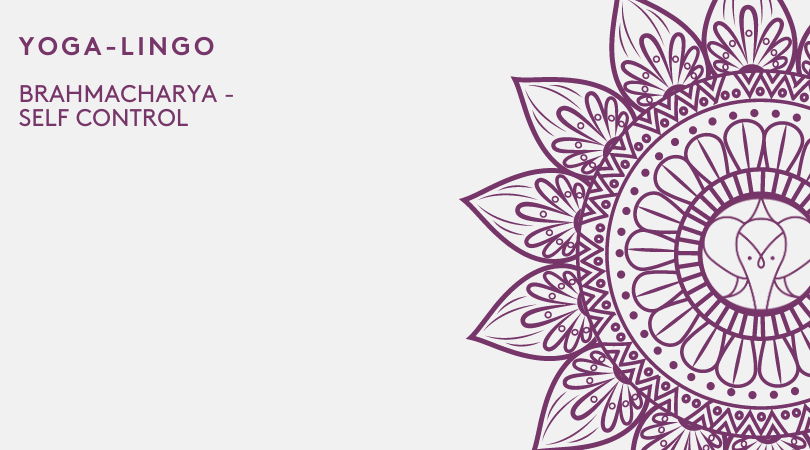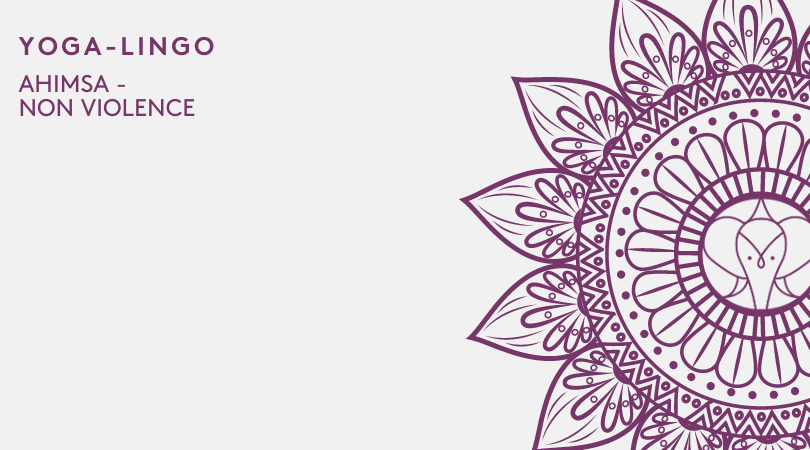Practicing Yoga Asana in A Safe Way — 10 Tips to Avoid Yoga Injuries
Yoga is generally a healing practice with loads of health benefits. It is effective in relieving stress, and it is an excellent way to inject a sense of spirituality in your everyday life without having to follow a specific religion. It significantly improves flexibility and promotes blood circulation.
Moreover, yoga can help you develop stronger muscles and hence a stronger body. It also motivates you to try new things that are geared to augment your self-confidence. However, yoga, like any other form of exercise can result in serious injury.
Jumping into overly complex routines, your body may not be ready for or practicing yoga poses incorrectly can raise your risk of various yoga injuries. In this article, we explore the most common yoga injuries and give you tips on how to avoid them and stay safe during your yoga sessions.
Shoulder Pain
Shoulder injuries are normally caused by improper alignment or too much weight on the head of the humerus. If you have tight shoulders, you'll be more prone to shoulder injuries. You'll know that you have tight shoulders if they round forward and you have difficulty straightening your arms when you lift them overhead.
In that case, practicing yoga push-ups and arm balances will irritate your shoulder tendons.
How to prevent shoulders injuries
You need to open up your chest muscles (pectorals), strengthen your back muscles (rhomboids) and all muscles connected to the scapula
To open your chest muscles, lie on your back on a rolled mat. Position yourself perpendicularly to your spine at the lower ribs. Your arms should be at your sides. Lift them up, and over your head, to the maximum extent, they can go without pain.
To strengthen your back muscles, lie face down on the mat keeping your arms by your sides. Then, lift your arms and torso, stretching your arms and shoulders toward your feet.
One way to strengthen your scapula is to do scapula push-ups. Start on all fours and let the shoulder blades meet when melting chest down towards the floor now, second push the floor away like you do a high plank separating the shoulder blades. 3x10 is a good start
Lower Back Pain
Lower back pain is one of the most complained about yoga injuries. Yoga experts think it emanates from rounding through the spine in poses such as down dog and forward folds. Rounding your spine usually comes as the body tries to compensate from tight hamstrings or hips.
Besides the feeling of pain after a yoga session, spine flexion when the spine doesn't have the strength to support that, can lead to disc complications.
How to prevent shoulder injuries
As you bend, send the hips back (hip hinge) and bend the knees as much as you need to. This will prevent rounding. If that’s difficult for you to do, you can consider bending your knees in poses such as down dog and forward folds. When performing seated forward folds, you can sit on a blanket or block to ease the pressure from your back.
Wrist Strains
Many yoga poses require you to be on your wrists. Your body may not be used to this, especially if you are a beginner. If done improperly, poses like chaturanga, crow, facing dog, handstand, plank, and side plank can lead to wrist strains and pain.
How to prevent wrist strains
You should pay special attention to your hand and wrist alignment, even in the simplest of poses. Before you heave up your entire body weight on your wrists, be sure to warm up properly and gradually add pressure.
Also, try to spread weight evenly through your hands. Here are some tips for preventing wrist strains and injuries:
Avoid taking your shoulders exceedingly far forward past your wrists
Don’t cup your palms or turn your fingers inward
Always push your index knuckle down
Using a yoga wedge or a rolled up mat can help ease the pressure on your wrists
Knee Injuries
At times you'll feel tension, discomfort, or pain in your knees during a yoga session. Such feelings usually are the result of tight hips or pre-existing injuries. According to a 2012 study, yoga can cause meniscus tears.
How to prevent knee tears and other injuries
- Try keeping your knee over your ankle in any lunging poses. When bent, be sure your knee tracks over your second middle toe. Your knee shouldn’t cave inward.
- When upright, be sure your knee is in a micro-bent position. Avoid hyperextending trying to get balance, you will only damage the joint over time.
- For Padmasana - Lotus pose, don't force yourself into this position so that you get knee pain. Clamp the knees close and press the outer edges, top of the feet into the thighs. If you have tight hips sit on something so you get little higher and sit in half lotus or Sukhasana - Easy pose instead.
- Supine Pigeon, Draw foot in towards your hip, flex your foot and flare your toes.
Hamstring Injuries
Most people have tight hamstrings today. This has been attributed to modern lifestyles. Whether you’re a running enthusiast, an ardent walker, or you normally sit for long periods, you’re likely to have a tight hamstring.
Moreover, hamstrings keep on changing. You may be able to get your heels to the ground today in a downward facing dog with straight legs, but tomorrow you might not be able to do the same.
How to prevent hamstring injuries
Strengthen your hamstrings. You can not only focus on stretching your hamstrings, to prevent injuries, but you also need to start strengthening them too.
Hip Injuries
If you’re not careful during splits, wide-legged forward folds, and warrior poses, you may exceed you’re the range of motion in your hips. This may cause tearing of the inner thigh or inner groin muscles.
How to prevent tearing if inner thigh and inner groin muscles
The most effective way to prevent these kinds of injuries is by strengthening your hip muscles and hip stabilizers. Strengthening your hip flexors and glute muscles will give you lots of stability as you move through hip opening postures.
Rib Injuries
If you’re looking to release tension with yoga, you can’t go wrong with twists. If done incorrectly, however, twists can overstretch or damage the intercostal muscles – the muscles in between your ribs.
How to prevent rib injuries
You should stretch upward through your spine before you twist. Try twisting until you feel like you’re stretching, but don’t go beyond that point no matter how flexible you are.
Neck injuries
Neck injuries are perhaps the most dreaded of yoga injuries. They normally occur in the form of herniated discs during headstands or shoulder stands. These injuries take time to heal.
You’re most likely to get a neck injury if you place your weight too far forward on your forehead or too far back.
How to avoid neck injuries
Avoid going into the full wheel and resting on the top of your head before you go up in the pose. This is because much of your body weight sits on your neck.
Also, avoid performing poses like upward dog and camel without support. You don’t want to fling your neck too far back. It’s important to distribute your weight properly, shifting much of it to your arms, when putting pressure on your neck during an inversion.
Elbow Injuries
Certain poses, such as chaturanga, can lead to joint pain in your elbows. You may not experience difficulty performing these poses, but lowering down with your elbows pointing outwards may end up straining the elbow joints.
How to prevent elbow injuries
If you have to bend your elbows in any pose, be sure your elbows are tucked beside your ribs as you bend them. The creases of your elbows should face forward.
Additional tips to avoid common yoga injuries
There are several other things you can do to ensure safe yoga practices:
- Always warm up- There are numerous benefits of warming up before starting your yoga session. Besides helping you avoid unsuccessful yoga and back injuries, warming up will also increase your muscles and body temperatures, which promote elasticity and minimize the chances of overexertion. Moreover, warm-ups lubricate joints allowing your body to get the most out of various yoga poses.
- Never exceed your limit – All breathing that you do during your yoga practice should be through your nose. If you’re so overwhelmed that you have to breathe through your mouth, chances are that you’re pushing beyond your limit, and it’s time to take a break. Also, if you find yourself shaking uncontrollably, and you can no longer focus on your posture nor breathe properly, then you’ve certainly exceeded your limit. Another indication that you’ve gone beyond your threshold is when you feel that any part of your body is less coordinated and just seemed sort of ‘dumb’ or when you feel pain.
- Get to understand your alignment – You should realize that yoga poses don’t have alignment, but you do. You may execute your alignment properly for you, but that same posture may not work effectively for another person. Nonetheless, some people have limitations in their joints and muscles. Other people have mental or emotional limitations. So, you need to understand yourself—get to know your alignment as well as limitations to avoid pushing yourself beyond your abilities.
- Uphold mindfulness – You should always listen to your inner voice and every muscle that works with it. If you feel that a pose is too strenuous, stop, don’t push it beyond your comfort zone. Yoga is about improving your well-being, not ruining it. If you disregard what your body is telling you, you’ll actually be practicing yoga for back injuries and other health complications.
- Consider using props – Props allow you to experience the expected stretch of a pose even if your body doesn’t have the capacity to achieve the stretch. Props adjust gaps in the joints and other parts of the body preventing overexertion and relieving unnecessary stress on the body. It’s worth noting that different people need props for different situations. If you don’t know when props are appropriate in your yoga practice, consider seeking the advice of a yoga expert.
- Find an experienced guide – There are plenty of free videos available online on how to prevent yoga injuries. However, it is imperative that you engage a real yoga instructor. You want someone who can pay attention to your practice, give you direction, and take time to work with you. Take your time to research and find a yoga teacher that suits your personal needs.
In Conclusion
While yoga has numerous benefits such as reduced stress, anxiety, and tension, increased strength, and flexibility, as well as mental and spiritual stability, yoga can cause a number of injuries if you don’t practice it in a correct manner.
The most common yoga injuries include lower back, wrist, hip, elbow, neck, shoulder, hamstring, and knee injuries. If you put a lot of your body weight on wrists, for example, you may end up with strained wrists.
Fortunately, there are ways to prevent yoga injuries. You should always start a pose from the part of your body that sits on the ground and build from there. You want to be stable from the foundation of every pose to prevent improper alignment. Remember to warm up before yoga sessions, understand your alignment, and always stay within your limits. If in doubt, seek a trained professional, but above all—be safe and enjoy yourself.









